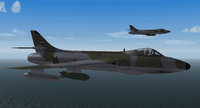
regula50
JUNIOR MEMBER-
Content count
182 -
Joined
-
Last visited
-
-
-
-

Italian Terrain (incl. 1915-1917 campaign)
regula50 reviewed gterl's file in First Eagles - WWI and Early Years - Terrain and Environmental Mods
Good idea this map. But, where we can find all this missing objects(not included)like: Airfield, AlbatrosD3, Ballon, Be2c, Church1, Church2,DebrisLarge2, DebrisSmall2, DebrisSmall3, Fort6, GermanParabellumAAA, Hangar5, Hangar6, Hangar9, ItalianPatrol, Schack1, Schack2, Schack3, Schack4, Schornstein2, Tent2, town3, town4, Tree3c, Village1, Village2, Watertower1, Watertower2? Maybe some extra library objects had this items? Thanks- 4 comments
-
- first eagles
- terrain
-
(and 3 more)
Tagged with:
-
-

Armored Cars
regula50 commented on Stephen1918's file in First Eagles - WWI and Early Years - Object Mods
-
Where do i get the planes that your mod says is required? I've searched all over and can't find them
Tainan Kokutai New Guinea 1942 campaign(Part 1)
-

RJAF No.1 Sqn Hunter 6 Six Days War
regula50 posted a topic in Thirdwire: Strike Fighters 2 Series - File Announcements
View File RJAF No.1 Sqn Hunter 6 Six Days War Campaign RJAF No.1 Sqn Six Days war(Hunter 6) For Wings over Israel. This campaign with 11 missions for the RJAF No.1 Sqn with Hunter 6 cover the periode from Jun 5 to Jun 10, 1967. Historical accurate with the main units, number of aircrafts and RJAF deployment by Jun 5, 1967. Added to the campaign and included textures for IrAF No.17 MiG-21FL, No.10 Sqn detachment with Tu-16 and SyAAF No.19 Sqn IL-28s. Revised ground forces and add AMX-13, Su-100, BTR-50PK, M16Quad, M113, PZKW-IVA, 37InchAA, and two Bofors type AAA. RJAF and Hunter 6 The RJAF introduced the Hunter 6 in service in Nov 1958. With the 11 jets delivered arrived also a group of British instructors led by Wg Cdr Bennet, RAF, to support the RJAF through the process of introducting this type into service. Introduction process faced a number of problems, resulting in heavy attrition of the Hunter fleet and even pilot losses. Lt Marwan Jamil Zakaria was killed in the crash of a Junter F.6 on Oct 7, 1959, and another Hunter was lost in a crash on Jul 1, 1960, although its pilot ejected safely. Only two months later, on Sep 10, 1960, Lt Ali Saleem al-Omari was killed in another crash. This series of incidents prompted the RJAF to order three newly builded Hunter T.66B for almost immediately delivery, in order to ease the process of converting its young pilots to the type. The same year were acquired two Hunters equipped for reconnaissance purposes, two ex-RAF FR.10s. In 1961, following acquisition of MiGs by Iraq, King Hussein decided to replace the Vampires flown by No.2 Sqn and ordered another batch of 12 ex RAF F.6s. Deliveries of these aircrafts began in April 1962, and resulted in the retirement of Jordan remaning Vampires on Apr 17, 1962. In November 1962, the RJAF lost six pilots for defection to Egypt.. Same month, RJAF Hunters were re-deployed to Arabia Saudita for 10 days. By 1963, the RJAF had 20 Hawker Hunter F.6 on strenght, two FR.10 reconnaissance type and three training type T.66B. No.2 Sqn was disbanded, its personnal and equipment being amalgamated into No.1 Sqn. During the same year was created a display team, named Hashemite Diamond. Two Hunters were lost in separate accidents in 1964-1965, including T.66B with serial number 714 written off in a crash that killed both of its pilots, on Aug 15, 1965. This same year, the former F.6s of No.2 Sqn were returned to the UK for conversion to FGA.9 standard and designated FGA.73. By May 1967, work of eight Hunters was complete and six of the aircraft returned to Jordan. At the eve of the Six Days War, Jun 5, 1967, RJAF No.1 Sqn had only 21 Hunters on hand, with 18 combat ready. The unit was based at Mafraq AB, with 14 pilots and his mission was interception and close support duties The units was also in reorganisation for conversion in F-104 Starfighter and most of the pilots were in USA and only 14 pilots were availables. Two Pakistanies instructors were added to the roster of pilots. No.1 Squadron RJAF was among the first Jordanian military units to be alerted for action, at 05.00 local time on the morning of Jun 5, 1967, and its pilots expected to take off as soon as the new came that the war had started. Maj Firas Ajlouni, CO No.1 Squadron, gathered his pilots for a briefing, instruction seven of them to prepare for air defense sorties, while he was to lead the others into an attack on Israeli airfields. RJAF Hunters were launched between 11.50 and 11.55 to strike“Netanya Air Base“ a small airfield east of Haifa used by civilians only. The three Hunters formation dont finded the target and after Israeli reports attack with HSI rockets ABIC Pharmaceutics factory. On the way back towards Mafraq AB their formations was nearly intercepted by a pair of Mirages from No.117 Squadrons, scrambled from Ramat David and vectored to intercept Iraqi Hunters. The GCI give a vector to intercept the three RJAF Hunters and near Ramleh the Mirages sighted the Jordanians. However, the only Shafrir 1 missile the Israelis managed to fire missed its low-flying target, and the pilots were then vectored to intercept another target. The three RJAF Hunters returned to Mafraq undisturbed. Other RJAF four Hunters patrol near the border was not so lucky. Four IDF/AF Mirages of the No.117 Sqn sighted the Jordanians and went to intercept. No.1 Sqn Hunters dive to the ground and take the heading to Mafraq, but Capt Wasfi Ammari was pursued by O.Sagee flying Mirage IIICJ No.44. Sagee launched a Shafrir 1 but this one dropped downwards, below the enemy engine; he switch to cannon and at 200m shot down the Hunter after crossing the Jordan river. Wasfi Ammari ejected, was wounded and recovered. At 13.48 hours(Jordanian time)four Super Mystere B2 from No.109 Sqn destroyed the main Jordan radar at Ajloun. The alert was gived at Amman but was too late. One of the two Pakistani instructors took off from Mafraq AB with a Jordanian pilot, Lt Ishan Chourdom, for interception of No.109th Sqn Super Mysteres and one minute later, Mafraq was under attack by eight Mystere IVA of the 116th Sqn. Two Hunters in preparation for take off were quickly engaged. Both fighters were destroyed at ground and one pilot, Maj Firass al-Journi was KIA. The Israelians damaged the runway and claims the destruction of three Hunters on the ground. One Mystere IVA was damaged by AAA. The Pakistani instructors, Lt Saif-oul-Azam , engaged a formation of four Mystere and hit the No.4. The Mystere loss sobre debris and Azam engaged then two other Mystere. A 200m a burst of his cannon hit one of the Mystere and the Israelian fighter start to descend. Azam was credited with one victory. IDF/AF admitted the loss of Mystere IVA No.94 of the 116th Sqn, flown by Lt. H.Bola(KIA). The Israelians claims 24 Hawker Hunter destroyed on the ground at Mafraq AB, but actually were destroyed or badly damaged 13 Jordanian fighters. Azam and Chourdom returned to Mafraq AB but with the rwy damaged, were forced to divert and land at Amman AB. At 14.00 hours Mafraq was again attacked, this time by four Ouragans of No.113th Sqn. They encountered no opposition other than AAA fire and flew three attack patterns to claim the destruction of two Hunters on the ground. Two Ouragan were damaged by the AAA and the No.4, failed to respond to calls from other formation members and enter striaght into the “no-fly zone“ over the Dimona complex. He was finally shot down by one Israelian missile Hawk when his fly too near of Dimona nuclear plant. At 14.07 Mafraq receive a third strike by the Mystere IVA of 116th Sqn . The base was again attacked by Ouragans at 14.22 and 14.30 and eight Vampire and at least two helicopters were destroyed. One Ouragan was hit by AAA and his pilot ejected safely over the Mediterranean Sea. At 14.39 Amman AB was attacked by four Mirages from No.119 Sqn. The Mirages first bombed the runway then returned to strafe aircrafts on ground, destroying the last Hunters, the UN C-47, one RJAF Westland Widgeon, the DH Dove of the British Attaché and one Beech Bonanza. One RJAF DH Dove was also damaged. Four Hunters(including Azam and Chourdom fighters)were destroyed at the ground and the runway was damaged. By the end of the journey, 17 of the 21 RJAF Hawker Hunters were destroyed. Only four, but damaged, survived the Israelian attacks. Two pilots were KIA. Without fighters to fly, Lt Saif-oul-Azam and Lt Ishan Chourdom quit Jordan and travel by ground to Habbaniya AB in Iraq arriving there in the last hours of Jun 6, 1967. Tired after so a long travel, were again combat ready by 04.00 hours and were instructed to prepare a cover protection mission for H-3 Al-Walid. Four Hunters 59 took-off from Habbaniya(formation included also IrAF pilots Lt Samir Yousif Zainal and Galeb al-Hamid al-Qaysi)and in route were vectored to intercept the 3th IDF/AF strike underway to attack H-3 Al-Wallid. (The Israelian make the mistake of use the same path used in his failed 2th attack and were easily spotted by observers deployed in the desert). If the 2th strike againt H-3 Al-walid was a failure for the IDF/AF, the third was a disaster. The IDF/AF formation was composed with 4 Vautour of the No.110th Sqn with the escort of 4 Mirage IIICJ of the 117th Sqn. The Mirage were armed with bombs to destroy H-3 rwy. At 11.30 the Israelian began the attack on H-3 but were intercepted some two minutes later by the IrAF Hunters. One Hunter was shot down by Capt G.Dror in Mirage IIICJ No.60(pilot Galeb al-Hamid al-Qaysi was KIA). But Dror had not time to celebrate his victory, some second after his Mirage was hit by the 30mm rounds of Saif-oul-Azam and was forced to eject and became POW. After shot down Dror, Saif-oul-Azam, manouevre, evaded a burst of Ezra Dothan and hit the Vautour fly by Cne Glant-Golan. He eject also to became POW. That was Azam´s 3th victory in the Six Days War. Near at the same time, Azam´s No.3, Lt Zainal, evaded another burst of Ezra Dothan and hit another Vautour. The Jet start to smoke and the two crew eject but the Vautour exploded flamming the two parachutes. By this moment the CO of the IDF/AF Somech ordered to disengaged but Zainal continued his attack and went behind the two last two Vautours. He hit again another and the jet start to smoke and finally was forced to broke the contact over Jordania, short of fuel and land at H-3. Azam and Chourdom succeded in return with the last drops of fuel to Habbaniya AB. Zainal, after refuelling at H-3, returned to Habbaniya one hour after. In the returning flight the surviving Israelians were taked in chase by two SyAAF MiG-21FL of No.67 Sqn. The Syrians launched four R-3S but only one find the target and hit the Mirage flown by Maj E.Dothan(No.29). Dothan succeded in return and safely land his damaged Mirage at Megido AB. Install Follow readme instructions and other additional information. Thanks and credits: Paulopanz for the MiG-17F "Fresco-C EAF mod, MiG-15UTI and Ouragan. Team of the SF2 tank pack. Sources: Several but mainly, "Arab MiGs" Supersonic Fighters Vol 2 and The June 1967 War Vol 3 by Tom Cooper and David Nicolle. Happy flights. Submitter regula50 Submitted 08/31/2017 Category User Made Campaigns -
Version 1.0.0
148 downloads
Campaign RJAF No.1 Sqn Six Days war(Hunter 6) For Wings over Israel. This campaign with 11 missions for the RJAF No.1 Sqn with Hunter 6 cover the periode from Jun 5 to Jun 10, 1967. Historical accurate with the main units, number of aircrafts and RJAF deployment by Jun 5, 1967. Added to the campaign and included textures for IrAF No.17 MiG-21FL, No.10 Sqn detachment with Tu-16 and SyAAF No.19 Sqn IL-28s. Revised ground forces and add AMX-13, Su-100, BTR-50PK, M16Quad, M113, PZKW-IVA, 37InchAA, and two Bofors type AAA. RJAF and Hunter 6 The RJAF introduced the Hunter 6 in service in Nov 1958. With the 11 jets delivered arrived also a group of British instructors led by Wg Cdr Bennet, RAF, to support the RJAF through the process of introducting this type into service. Introduction process faced a number of problems, resulting in heavy attrition of the Hunter fleet and even pilot losses. Lt Marwan Jamil Zakaria was killed in the crash of a Junter F.6 on Oct 7, 1959, and another Hunter was lost in a crash on Jul 1, 1960, although its pilot ejected safely. Only two months later, on Sep 10, 1960, Lt Ali Saleem al-Omari was killed in another crash. This series of incidents prompted the RJAF to order three newly builded Hunter T.66B for almost immediately delivery, in order to ease the process of converting its young pilots to the type. The same year were acquired two Hunters equipped for reconnaissance purposes, two ex-RAF FR.10s. In 1961, following acquisition of MiGs by Iraq, King Hussein decided to replace the Vampires flown by No.2 Sqn and ordered another batch of 12 ex RAF F.6s. Deliveries of these aircrafts began in April 1962, and resulted in the retirement of Jordan remaning Vampires on Apr 17, 1962. In November 1962, the RJAF lost six pilots for defection to Egypt.. Same month, RJAF Hunters were re-deployed to Arabia Saudita for 10 days. By 1963, the RJAF had 20 Hawker Hunter F.6 on strenght, two FR.10 reconnaissance type and three training type T.66B. No.2 Sqn was disbanded, its personnal and equipment being amalgamated into No.1 Sqn. During the same year was created a display team, named Hashemite Diamond. Two Hunters were lost in separate accidents in 1964-1965, including T.66B with serial number 714 written off in a crash that killed both of its pilots, on Aug 15, 1965. This same year, the former F.6s of No.2 Sqn were returned to the UK for conversion to FGA.9 standard and designated FGA.73. By May 1967, work of eight Hunters was complete and six of the aircraft returned to Jordan. At the eve of the Six Days War, Jun 5, 1967, RJAF No.1 Sqn had only 21 Hunters on hand, with 18 combat ready. The unit was based at Mafraq AB, with 14 pilots and his mission was interception and close support duties The units was also in reorganisation for conversion in F-104 Starfighter and most of the pilots were in USA and only 14 pilots were availables. Two Pakistanies instructors were added to the roster of pilots. No.1 Squadron RJAF was among the first Jordanian military units to be alerted for action, at 05.00 local time on the morning of Jun 5, 1967, and its pilots expected to take off as soon as the new came that the war had started. Maj Firas Ajlouni, CO No.1 Squadron, gathered his pilots for a briefing, instruction seven of them to prepare for air defense sorties, while he was to lead the others into an attack on Israeli airfields. RJAF Hunters were launched between 11.50 and 11.55 to strike“Netanya Air Base“ a small airfield east of Haifa used by civilians only. The three Hunters formation dont finded the target and after Israeli reports attack with HSI rockets ABIC Pharmaceutics factory. On the way back towards Mafraq AB their formations was nearly intercepted by a pair of Mirages from No.117 Squadrons, scrambled from Ramat David and vectored to intercept Iraqi Hunters. The GCI give a vector to intercept the three RJAF Hunters and near Ramleh the Mirages sighted the Jordanians. However, the only Shafrir 1 missile the Israelis managed to fire missed its low-flying target, and the pilots were then vectored to intercept another target. The three RJAF Hunters returned to Mafraq undisturbed. Other RJAF four Hunters patrol near the border was not so lucky. Four IDF/AF Mirages of the No.117 Sqn sighted the Jordanians and went to intercept. No.1 Sqn Hunters dive to the ground and take the heading to Mafraq, but Capt Wasfi Ammari was pursued by O.Sagee flying Mirage IIICJ No.44. Sagee launched a Shafrir 1 but this one dropped downwards, below the enemy engine; he switch to cannon and at 200m shot down the Hunter after crossing the Jordan river. Wasfi Ammari ejected, was wounded and recovered. At 13.48 hours(Jordanian time)four Super Mystere B2 from No.109 Sqn destroyed the main Jordan radar at Ajloun. The alert was gived at Amman but was too late. One of the two Pakistani instructors took off from Mafraq AB with a Jordanian pilot, Lt Ishan Chourdom, for interception of No.109th Sqn Super Mysteres and one minute later, Mafraq was under attack by eight Mystere IVA of the 116th Sqn. Two Hunters in preparation for take off were quickly engaged. Both fighters were destroyed at ground and one pilot, Maj Firass al-Journi was KIA. The Israelians damaged the runway and claims the destruction of three Hunters on the ground. One Mystere IVA was damaged by AAA. The Pakistani instructors, Lt Saif-oul-Azam , engaged a formation of four Mystere and hit the No.4. The Mystere loss sobre debris and Azam engaged then two other Mystere. A 200m a burst of his cannon hit one of the Mystere and the Israelian fighter start to descend. Azam was credited with one victory. IDF/AF admitted the loss of Mystere IVA No.94 of the 116th Sqn, flown by Lt. H.Bola(KIA). The Israelians claims 24 Hawker Hunter destroyed on the ground at Mafraq AB, but actually were destroyed or badly damaged 13 Jordanian fighters. Azam and Chourdom returned to Mafraq AB but with the rwy damaged, were forced to divert and land at Amman AB. At 14.00 hours Mafraq was again attacked, this time by four Ouragans of No.113th Sqn. They encountered no opposition other than AAA fire and flew three attack patterns to claim the destruction of two Hunters on the ground. Two Ouragan were damaged by the AAA and the No.4, failed to respond to calls from other formation members and enter striaght into the “no-fly zone“ over the Dimona complex. He was finally shot down by one Israelian missile Hawk when his fly too near of Dimona nuclear plant. At 14.07 Mafraq receive a third strike by the Mystere IVA of 116th Sqn . The base was again attacked by Ouragans at 14.22 and 14.30 and eight Vampire and at least two helicopters were destroyed. One Ouragan was hit by AAA and his pilot ejected safely over the Mediterranean Sea. At 14.39 Amman AB was attacked by four Mirages from No.119 Sqn. The Mirages first bombed the runway then returned to strafe aircrafts on ground, destroying the last Hunters, the UN C-47, one RJAF Westland Widgeon, the DH Dove of the British Attaché and one Beech Bonanza. One RJAF DH Dove was also damaged. Four Hunters(including Azam and Chourdom fighters)were destroyed at the ground and the runway was damaged. By the end of the journey, 17 of the 21 RJAF Hawker Hunters were destroyed. Only four, but damaged, survived the Israelian attacks. Two pilots were KIA. Without fighters to fly, Lt Saif-oul-Azam and Lt Ishan Chourdom quit Jordan and travel by ground to Habbaniya AB in Iraq arriving there in the last hours of Jun 6, 1967. Tired after so a long travel, were again combat ready by 04.00 hours and were instructed to prepare a cover protection mission for H-3 Al-Walid. Four Hunters 59 took-off from Habbaniya(formation included also IrAF pilots Lt Samir Yousif Zainal and Galeb al-Hamid al-Qaysi)and in route were vectored to intercept the 3th IDF/AF strike underway to attack H-3 Al-Wallid. (The Israelian make the mistake of use the same path used in his failed 2th attack and were easily spotted by observers deployed in the desert). If the 2th strike againt H-3 Al-walid was a failure for the IDF/AF, the third was a disaster. The IDF/AF formation was composed with 4 Vautour of the No.110th Sqn with the escort of 4 Mirage IIICJ of the 117th Sqn. The Mirage were armed with bombs to destroy H-3 rwy. At 11.30 the Israelian began the attack on H-3 but were intercepted some two minutes later by the IrAF Hunters. One Hunter was shot down by Capt G.Dror in Mirage IIICJ No.60(pilot Galeb al-Hamid al-Qaysi was KIA). But Dror had not time to celebrate his victory, some second after his Mirage was hit by the 30mm rounds of Saif-oul-Azam and was forced to eject and became POW. After shot down Dror, Saif-oul-Azam, manouevre, evaded a burst of Ezra Dothan and hit the Vautour fly by Cne Glant-Golan. He eject also to became POW. That was Azam´s 3th victory in the Six Days War. Near at the same time, Azam´s No.3, Lt Zainal, evaded another burst of Ezra Dothan and hit another Vautour. The Jet start to smoke and the two crew eject but the Vautour exploded flamming the two parachutes. By this moment the CO of the IDF/AF Somech ordered to disengaged but Zainal continued his attack and went behind the two last two Vautours. He hit again another and the jet start to smoke and finally was forced to broke the contact over Jordania, short of fuel and land at H-3. Azam and Chourdom succeded in return with the last drops of fuel to Habbaniya AB. Zainal, after refuelling at H-3, returned to Habbaniya one hour after. In the returning flight the surviving Israelians were taked in chase by two SyAAF MiG-21FL of No.67 Sqn. The Syrians launched four R-3S but only one find the target and hit the Mirage flown by Maj E.Dothan(No.29). Dothan succeded in return and safely land his damaged Mirage at Megido AB. Install Follow readme instructions and other additional information. Thanks and credits: Paulopanz for the MiG-17F "Fresco-C EAF mod, MiG-15UTI and Ouragan. Team of the SF2 tank pack. Sources: Several but mainly, "Arab MiGs" Supersonic Fighters Vol 2 and The June 1967 War Vol 3 by Tom Cooper and David Nicolle. Happy flights. -

EAF No.51 Sqn Sukhoi Su-7BMK Ramadan War
regula50 posted a topic in Thirdwire: Strike Fighters 2 Series - File Announcements
View File EAF No.51 Sqn Sukhoi Su-7BMK Ramadan War Campaign EAF No.51 Sqn Ramadan War(Sukhoi Su-7BMK) For Wings over Israel. This campaign with 36 missions for the EAF No.51 Sqn(205th Fighter-Bomber Brigade)cover the periode from Oct 6, 1973 to Oct 24, 1973. Historical accurate with the main units and bases deployment by and after October 6, 1973. Revised ground forces and add tank Su-100, BTR-50PK infantry transport, FROG-7, Scud-B(three launched on Oct 22, 1973)and three type of Bofors AAA. EAF No.51 Squadron and Sukhoi Su-7BMK By the Ramadan War, No.51 Squadron was one of three units of the EAF equipped with Su-7BMK. The more experienced No.55 Squadron was equipped with the new and vastly improved Su-20. The Su-7BMK was a simplified export version of Su-7BM, manufactured 1967-1971 with 441 built. The three Su-7BMK squadrons(No.51, No.52 and No.53)formed the 205th Fighter-Bomber Brigade with bases at Bilbeis, Bilbeis Qutamiyah and el-Mansourah. Full complement of the Brigade was 48 Su-7BMK. From the first days of the entry in service of the Su-7BMK, the EAF was dissapointed with the type. The powerful Lyuka Al-7F1 turbojet, was a thirsty engine and occuped almost two thirds of the fuselage increasing vulnerability. Range was limited and drop tanks were mandatory. Despite Sukhoi brochures "as capable of self protection from enemy interceptors", combat operations over the Sinai proved the contrary. However, with a skilled pilot this two 30mm with 70 rounds each can give devastador results. Other problems were the weapons and the limited number of tyres and drop tanks(six for each aircraft)supplied by the Soviets. Rockets S-3K proved incapable of penetrating even the relatively thin top-side armour of the Israeli tanks. Despite a good number of the requests of the EAF for improvements, Sukhoi only acceded in instaling the requested mirrors. The EAF was in his own and with the colaboration of Helwan factory, the type was continued improved from 1967. To increase the range, Helwan took the 500 liters drop tanks, cut him, inserted a strech section between and increase the capacity to 1050 liters. Because the Soviets refused to deliver enough replacement weapons, Helwan produced the bomb Kaakaa-100-105(based on the Soviet FAB-100-105), the Kaakaa-250(FAB-250M-54)and later the Nasr-250(FAB-250M-62). With Six Days War recovered and no exploded French bombs, Helwan developed one anti-rwy penetration bomb of 250 kg. The factory produced also the fuel-air explosive(FAE)of 200 kg, as well retarding fins for other GP weapons. By 1973, the Su-7BMK was vastly improved but pilots were only full satisfied with the arrivals of the Su-20s in the same year. EAF No.51 Squadron began operations in the Ramadan War by 13.48 hours on Oct 6, 1973. CO LtCol Hazem al-Gharby led 12 Su-7BMK and attacked Refidim AB and surrounding installations. Approaching at a very high speed and minimal altitude, the attack took the Israelis by surprise and the Su-7BMK holed the rwy in 10 places and destroyed the control tower. The third flight failed to find the HAWK site a Refidim and attacked as alternative the CP at Umm Qashiba. No.51 Sqn suffered no losses in his first mission of the war and Refidim, repaired was back in operations two days later. On Oct 11, 1973 four Su-7BMK of the No.51 Sqn destroyed the Israeli HAWK site near Baluza, opening the way for 12 MiG-17s in strike against tanks and vehicles, forward Israeli HQ and observation post at Um Hashiba. EAF´s Su-7BMK were used intensively by the Ramadan War suffering heavy losses with 20 jets downed(17 by IDF/AF interceptors, 2 by AAA and one by accident). In comparation SyAAF loss 14, the IrAF 15 and the QJJ one. Despite this limitation, some 50 Su-7BMK were still in service at the end of 1986. Campaign need the following extra aircrafts: MiG-17F "Fresco-C EAF mod(by Paulopanz) Aero L-29 Delfin "Maya(by Paulopanz) Campaign included a Su-7BMK ready to use.(Cockpit MiG-17. Sound default). Install Follow readme instructions and aditional informations Credits: MiG-17F "Fresco-C EAF mod(by Paulopanz) Aero L-29 Delfin "Maya(by Paulopanz) Spillone104 for the GP-9 Gunpod. Team of the SF2 tank pack. Sources: Several but mainly, "Arab MiGs" October 1973 War Vol 5 and 6 by Tom Cooper and David Nicolle. Happy flights Submitter regula50 Submitted 08/26/2017 Category User Made Campaigns -
Version 1.0.0
151 downloads
Campaign EAF No.51 Sqn Ramadan War(Sukhoi Su-7BMK) For Wings over Israel. This campaign with 36 missions for the EAF No.51 Sqn(205th Fighter-Bomber Brigade)cover the periode from Oct 6, 1973 to Oct 24, 1973. Historical accurate with the main units and bases deployment by and after October 6, 1973. Revised ground forces and add tank Su-100, BTR-50PK infantry transport, FROG-7, Scud-B(three launched on Oct 22, 1973)and three type of Bofors AAA. EAF No.51 Squadron and Sukhoi Su-7BMK By the Ramadan War, No.51 Squadron was one of three units of the EAF equipped with Su-7BMK. The more experienced No.55 Squadron was equipped with the new and vastly improved Su-20. The Su-7BMK was a simplified export version of Su-7BM, manufactured 1967-1971 with 441 built. The three Su-7BMK squadrons(No.51, No.52 and No.53)formed the 205th Fighter-Bomber Brigade with bases at Bilbeis, Bilbeis Qutamiyah and el-Mansourah. Full complement of the Brigade was 48 Su-7BMK. From the first days of the entry in service of the Su-7BMK, the EAF was dissapointed with the type. The powerful Lyuka Al-7F1 turbojet, was a thirsty engine and occuped almost two thirds of the fuselage increasing vulnerability. Range was limited and drop tanks were mandatory. Despite Sukhoi brochures "as capable of self protection from enemy interceptors", combat operations over the Sinai proved the contrary. However, with a skilled pilot this two 30mm with 70 rounds each can give devastador results. Other problems were the weapons and the limited number of tyres and drop tanks(six for each aircraft)supplied by the Soviets. Rockets S-3K proved incapable of penetrating even the relatively thin top-side armour of the Israeli tanks. Despite a good number of the requests of the EAF for improvements, Sukhoi only acceded in instaling the requested mirrors. The EAF was in his own and with the colaboration of Helwan factory, the type was continued improved from 1967. To increase the range, Helwan took the 500 liters drop tanks, cut him, inserted a strech section between and increase the capacity to 1050 liters. Because the Soviets refused to deliver enough replacement weapons, Helwan produced the bomb Kaakaa-100-105(based on the Soviet FAB-100-105), the Kaakaa-250(FAB-250M-54)and later the Nasr-250(FAB-250M-62). With Six Days War recovered and no exploded French bombs, Helwan developed one anti-rwy penetration bomb of 250 kg. The factory produced also the fuel-air explosive(FAE)of 200 kg, as well retarding fins for other GP weapons. By 1973, the Su-7BMK was vastly improved but pilots were only full satisfied with the arrivals of the Su-20s in the same year. EAF No.51 Squadron began operations in the Ramadan War by 13.48 hours on Oct 6, 1973. CO LtCol Hazem al-Gharby led 12 Su-7BMK and attacked Refidim AB and surrounding installations. Approaching at a very high speed and minimal altitude, the attack took the Israelis by surprise and the Su-7BMK holed the rwy in 10 places and destroyed the control tower. The third flight failed to find the HAWK site a Refidim and attacked as alternative the CP at Umm Qashiba. No.51 Sqn suffered no losses in his first mission of the war and Refidim, repaired was back in operations two days later. On Oct 11, 1973 four Su-7BMK of the No.51 Sqn destroyed the Israeli HAWK site near Baluza, opening the way for 12 MiG-17s in strike against tanks and vehicles, forward Israeli HQ and observation post at Um Hashiba. EAF´s Su-7BMK were used intensively by the Ramadan War suffering heavy losses with 20 jets downed(17 by IDF/AF interceptors, 2 by AAA and one by accident). In comparation SyAAF loss 14, the IrAF 15 and the QJJ one. Despite this limitation, some 50 Su-7BMK were still in service at the end of 1986. Campaign need the following extra aircrafts: MiG-17F "Fresco-C EAF mod(by Paulopanz) Aero L-29 Delfin "Maya(by Paulopanz) Campaign included a Su-7BMK ready to use.(Cockpit MiG-17. Sound default). Install Follow readme instructions and aditional informations Credits: MiG-17F "Fresco-C EAF mod(by Paulopanz) Aero L-29 Delfin "Maya(by Paulopanz) Spillone104 for the GP-9 Gunpod. Team of the SF2 tank pack. Sources: Several but mainly, "Arab MiGs" October 1973 War Vol 5 and 6 by Tom Cooper and David Nicolle. Happy flights -

EAF No.26 Sqn MiG-21F-13 Ramadan War
regula50 posted a topic in Thirdwire: Strike Fighters 2 Series - File Announcements
View File EAF No.26 Sqn MiG-21F-13 Ramadan War Campaign EAF No.26 Sqn Ramadan War(MiG-21F-13) For Wings over Israel. This campaign with 34 missions for the EAF No.26 Sqn cover the periode from Oct 7, 1973 to Oct 24, 1973. Historical accurate with the main units and bases deployment by and after October 7, 1973. Revised ground forces and add tank Su-100, BTR-50PK infantry transport, FROG-7, Scud-B(three launched on Oct 22, 1973)and three type of Bofors AAA. EAF No.26 "Black Ravens" Squadron No.26 Squadron was established in the autumn 1967. The Squadron was the first, following the Israelian example, to set aerial ambushes with two MiGs acting as baith and two or four others as shooters. First sucess coming in Oct 23, 1968 in the area Ismailiya-Suez Canal with two Mirages downed, one finded in May 1975 by the Egyptian Navy with the death pilot still in the cockpit. As usual, IDF/AF denied this losses. Based at Inchas AB during the War of Attrition, No.26 Squadron was the unit with the highest number of combat engagements in 1969-1970 and earned the reputation as the "best dogfighters" in the entire air arm. Pilots of the squadron introduce the practice of applying kill markings on their MiGs, and by 1973, at least two of the MiGs carried the unit insignia, a black raven with a white "26". The "Top Gun" of the unit was Reda el-Iraqi with three kills in the War of Attrition(all Mirages). The No.26 Squadron downed also IDF/AF ace Capt Giora Romm(5 victories)and became POW. By the Ramadan War, despite the availability of new variants like MiG-21MF or MiG-1PFM, the No.26 Squadron remained with the old MiG-21F-13. The aircraft was lighter and thus more manoeuvrable in comparison with recent variants. The single 30mm cannon with 60 rounds packed a more powerful punch than the 23mm GSh-23 installed in the MiG-21MF. Also, the F-13 was a dedicated interceptor and not a dual role like the MiG-21MF. No.25 Squadron follow the example of No.26 Squadron and give his MiG-21PFS to come back with the MiG-21F-13. Both Squadrons, forming the Air Brigade 102, had 30 MiG-21F-13 by the Ramadan War. The UARAF/EAF had taked in charge 90 MiG-21F-13(48 of the first batch delivered from Nov 1961 to 1963, 12 ex QJJ in Jun 1967 and 30 purchased with Aero-Vodochody in Czechoslovakia delivered in 1969). Last F-13s arriving by Dec 4, 1969. All this 30 jets were assigned to the Air Brigade 102. The SyAAF received during the Ramadan War, 11 MiG-21F-13 from Czechoslovaquia and 12 from Poland. The DDR deliver in the same periode 12 MiG-21M. Campaign need the following extra aircrafts: MiG-17F "Fresco-C EAF mod(by Paulopanz) Aero L-29 Delfin "Maya(by Paulopanz) Supplied a MiG-21F-13 ready to use with cockpit and sound. Camo2 Tiger Stripe. Very few F-13s carried Camo Nile Valley. Install Follow readme instructions and aditional informations Credits: MiG-17F "Fresco-C EAF mod(by Paulopanz) Aero L-29 Delfin "Maya(by Paulopanz) Spillone104 for the GP-9 Gunpod. Team of the SF2 tank pack. Authors of MiG-21F-13 cockpit and sound. Sources: Several but mainly, "Arab MiGs" October 1973 War Vol 5 and 6 by Tom Cooper and David Nicolle. Happy flights Submitter regula50 Submitted 08/26/2017 Category User Made Campaigns -
Version 1.0.0
176 downloads
Campaign EAF No.26 Sqn Ramadan War(MiG-21F-13) For Wings over Israel. This campaign with 34 missions for the EAF No.26 Sqn cover the periode from Oct 7, 1973 to Oct 24, 1973. Historical accurate with the main units and bases deployment by and after October 7, 1973. Revised ground forces and add tank Su-100, BTR-50PK infantry transport, FROG-7, Scud-B(three launched on Oct 22, 1973)and three type of Bofors AAA. EAF No.26 "Black Ravens" Squadron No.26 Squadron was established in the autumn 1967. The Squadron was the first, following the Israelian example, to set aerial ambushes with two MiGs acting as baith and two or four others as shooters. First sucess coming in Oct 23, 1968 in the area Ismailiya-Suez Canal with two Mirages downed, one finded in May 1975 by the Egyptian Navy with the death pilot still in the cockpit. As usual, IDF/AF denied this losses. Based at Inchas AB during the War of Attrition, No.26 Squadron was the unit with the highest number of combat engagements in 1969-1970 and earned the reputation as the "best dogfighters" in the entire air arm. Pilots of the squadron introduce the practice of applying kill markings on their MiGs, and by 1973, at least two of the MiGs carried the unit insignia, a black raven with a white "26". The "Top Gun" of the unit was Reda el-Iraqi with three kills in the War of Attrition(all Mirages). The No.26 Squadron downed also IDF/AF ace Capt Giora Romm(5 victories)and became POW. By the Ramadan War, despite the availability of new variants like MiG-21MF or MiG-1PFM, the No.26 Squadron remained with the old MiG-21F-13. The aircraft was lighter and thus more manoeuvrable in comparison with recent variants. The single 30mm cannon with 60 rounds packed a more powerful punch than the 23mm GSh-23 installed in the MiG-21MF. Also, the F-13 was a dedicated interceptor and not a dual role like the MiG-21MF. No.25 Squadron follow the example of No.26 Squadron and give his MiG-21PFS to come back with the MiG-21F-13. Both Squadrons, forming the Air Brigade 102, had 30 MiG-21F-13 by the Ramadan War. The UARAF/EAF had taked in charge 90 MiG-21F-13(48 of the first batch delivered from Nov 1961 to 1963, 12 ex QJJ in Jun 1967 and 30 purchased with Aero-Vodochody in Czechoslovakia delivered in 1969). Last F-13s arriving by Dec 4, 1969. All this 30 jets were assigned to the Air Brigade 102. The SyAAF received during the Ramadan War, 11 MiG-21F-13 from Czechoslovaquia and 12 from Poland. The DDR deliver in the same periode 12 MiG-21M. Campaign need the following extra aircrafts: MiG-17F "Fresco-C EAF mod(by Paulopanz) Aero L-29 Delfin "Maya(by Paulopanz) Supplied a MiG-21F-13 ready to use with cockpit and sound. Camo2 Tiger Stripe. Very few F-13s carried Camo Nile Valley. Install Follow readme instructions and aditional informations Credits: MiG-17F "Fresco-C EAF mod(by Paulopanz) Aero L-29 Delfin "Maya(by Paulopanz) Spillone104 for the GP-9 Gunpod. Team of the SF2 tank pack. Authors of MiG-21F-13 cockpit and sound. Sources: Several but mainly, "Arab MiGs" October 1973 War Vol 5 and 6 by Tom Cooper and David Nicolle. Happy flights -

IrAF No.66 Sqn Hunter 59 Ramadan War
regula50 posted a topic in Thirdwire: Strike Fighters 2 Series - File Announcements
View File IrAF No.66 Sqn Hunter 59 Ramadan War Campaign IrAF No.66 Sqn Ramadan War(Hunter 59) For Wings over Israel. This campaign with 36 missions for the Iraqi Air Force No.66 Sqn cover the periode from Oct 6, 1973 to Oct 24, 1973. Historical accurate with the main units and bases deployment by October 6, 1973. Revised ground forces and add tank Su-100, BTR-50PK infantry transport, FROG-7, Scud-B and three type of Bofors AAA. . IrAF No.66 Sqn was formed with No.6 and No.29 Squadrons-with a total of 24 Hunter F.Mk 59 and 30 pilots and was deployed to Egypt via Saudia Arabia on Apr 24, 1973. CO was Maj Yusuf Muhammed Rasouli. No.66 Sqn flew his first mission on Oct 6, 1973. 12 Hunters flying at less than 20m cross the Canal exactly as ordered at 14.00 hours and began his attack at 14.10, striking Israelian vehicles, artillery and armour. One flight of Hunters went for a 175mm artillery battery and destroyed several of them(confirmed also by the same IDF). After expended all rockets, the Hunters dive to attack with his 30mm Aden cannons. A second flight attack the HAWK site near Gidi Defile. All 12 Hunters returned to base using the assigned SAM corridor over Ismailia. Install Follow readme instructions and other additional information. Thanks and credits: MiG-17F "Fresco-C EAF mod(by Paulopanz) Aero L-29 Delfin "Maya(by Paulopanz) Spillone104 for the GP-9 Gunpod. Team of the SF2 tank pack. Sources: Several but mainly, "Arab MiGs" October 1973 War Vol 5 and 6 by Tom Cooper and David Nicolle. Submitter regula50 Submitted 08/22/2017 Category User Made Campaigns -
Version 1.0.0
105 downloads
Campaign IrAF No.66 Sqn Ramadan War(Hunter 59) For Wings over Israel. This campaign with 36 missions for the Iraqi Air Force No.66 Sqn cover the periode from Oct 6, 1973 to Oct 24, 1973. Historical accurate with the main units and bases deployment by October 6, 1973. Revised ground forces and add tank Su-100, BTR-50PK infantry transport, FROG-7, Scud-B and three type of Bofors AAA. . IrAF No.66 Sqn was formed with No.6 and No.29 Squadrons-with a total of 24 Hunter F.Mk 59 and 30 pilots and was deployed to Egypt via Saudia Arabia on Apr 24, 1973. CO was Maj Yusuf Muhammed Rasouli. No.66 Sqn flew his first mission on Oct 6, 1973. 12 Hunters flying at less than 20m cross the Canal exactly as ordered at 14.00 hours and began his attack at 14.10, striking Israelian vehicles, artillery and armour. One flight of Hunters went for a 175mm artillery battery and destroyed several of them(confirmed also by the same IDF). After expended all rockets, the Hunters dive to attack with his 30mm Aden cannons. A second flight attack the HAWK site near Gidi Defile. All 12 Hunters returned to base using the assigned SAM corridor over Ismailia. Install Follow readme instructions and other additional information. Thanks and credits: MiG-17F "Fresco-C EAF mod(by Paulopanz) Aero L-29 Delfin "Maya(by Paulopanz) Spillone104 for the GP-9 Gunpod. Team of the SF2 tank pack. Sources: Several but mainly, "Arab MiGs" October 1973 War Vol 5 and 6 by Tom Cooper and David Nicolle.

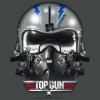
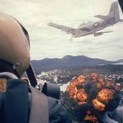
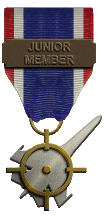




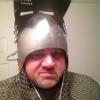

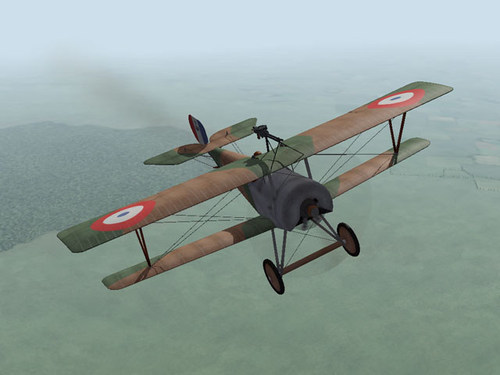

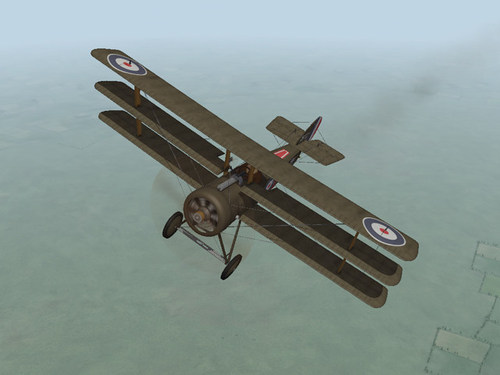

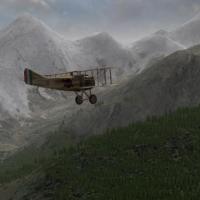

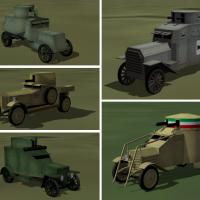

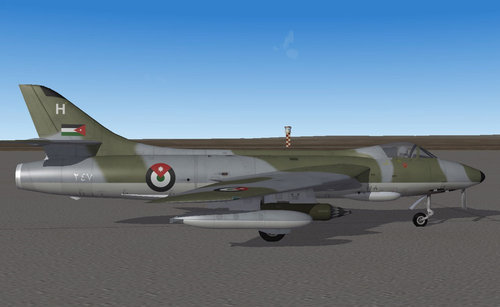
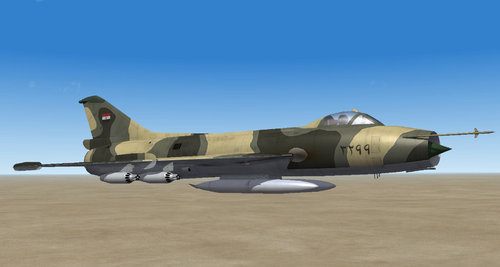
.thumb.jpg.fdbb57f7cf53d5881ca3c520b07df90c.jpg)
